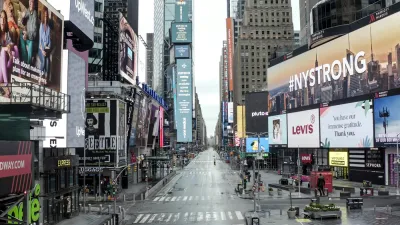The Covid 19 national emergency enacted by then-President Donald Trump in March 2020 was officially ended on Monday by President Joe Biden.

President Joe Biden signed legislation on Monday that ended the Covid 19 national emergency a few weeks before it was set to expire. President Biden signed the legislation behind closed doors after opposing the legislation but stopping short of a veto.
The legislation enables changes including the end of the U.S. Department of Housing and Urban Development’s COVID-19 mortgage forbearance program. More than 1.13 million Americans have died of Covid 19 in the last three-plus years, according to data from the Centers for Disease Control and Prevention. More than 1,700 Americans died of Covid 19 in the week ending on April 5.
While the legislation ends the national emergency, the public health emergency will continue until May 11, according to multiple reports.
News coverage of the legislation’s approval is available from the Associated Press, the Washington Post, CNN, Politico, and more.
Planetizen has been tracking the pandemic’s influence on communities and the practice of planning for the past three years. Revisit some of the historical record on Planetizen’s pages:
FULL STORY: Biden signs bill ending Covid-19 national emergency

National Parks Layoffs Will Cause Communities to Lose Billions
Thousands of essential park workers were laid off this week, just before the busy spring break season.

Retro-silient?: America’s First “Eco-burb,” The Woodlands Turns 50
A master-planned community north of Houston offers lessons on green infrastructure and resilient design, but falls short of its founder’s lofty affordability and walkability goals.

Delivering for America Plan Will Downgrade Mail Service in at Least 49.5 Percent of Zip Codes
Republican and Democrat lawmakers criticize the plan for its disproportionate negative impact on rural communities.

Test News Post 1
This is a summary

Test News Headline 46
Test for the image on the front page.

Balancing Bombs and Butterflies: How the National Guard Protects a Rare Species
The National Guard at Fort Indiantown Gap uses GIS technology and land management strategies to balance military training with conservation efforts, ensuring the survival of the rare eastern regal fritillary butterfly.
Urban Design for Planners 1: Software Tools
This six-course series explores essential urban design concepts using open source software and equips planners with the tools they need to participate fully in the urban design process.
Planning for Universal Design
Learn the tools for implementing Universal Design in planning regulations.
EMC Planning Group, Inc.
Planetizen
Planetizen
Mpact (formerly Rail~Volution)
Great Falls Development Authority, Inc.
HUDs Office of Policy Development and Research
NYU Wagner Graduate School of Public Service





























